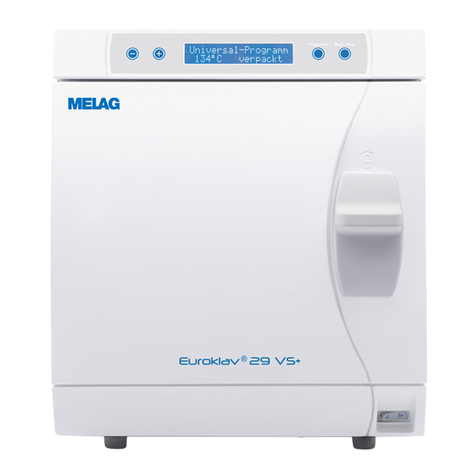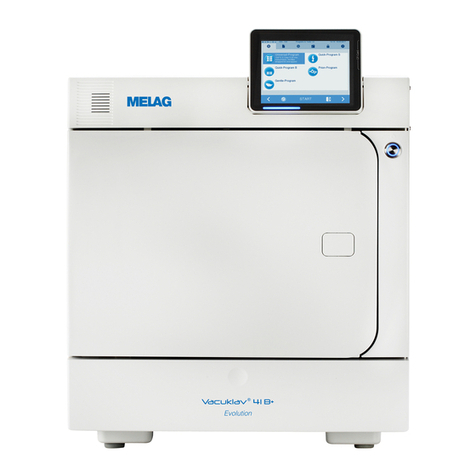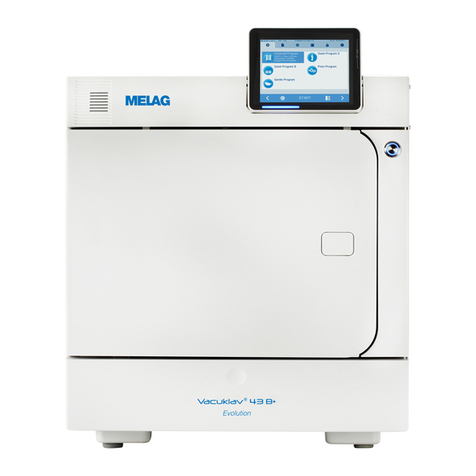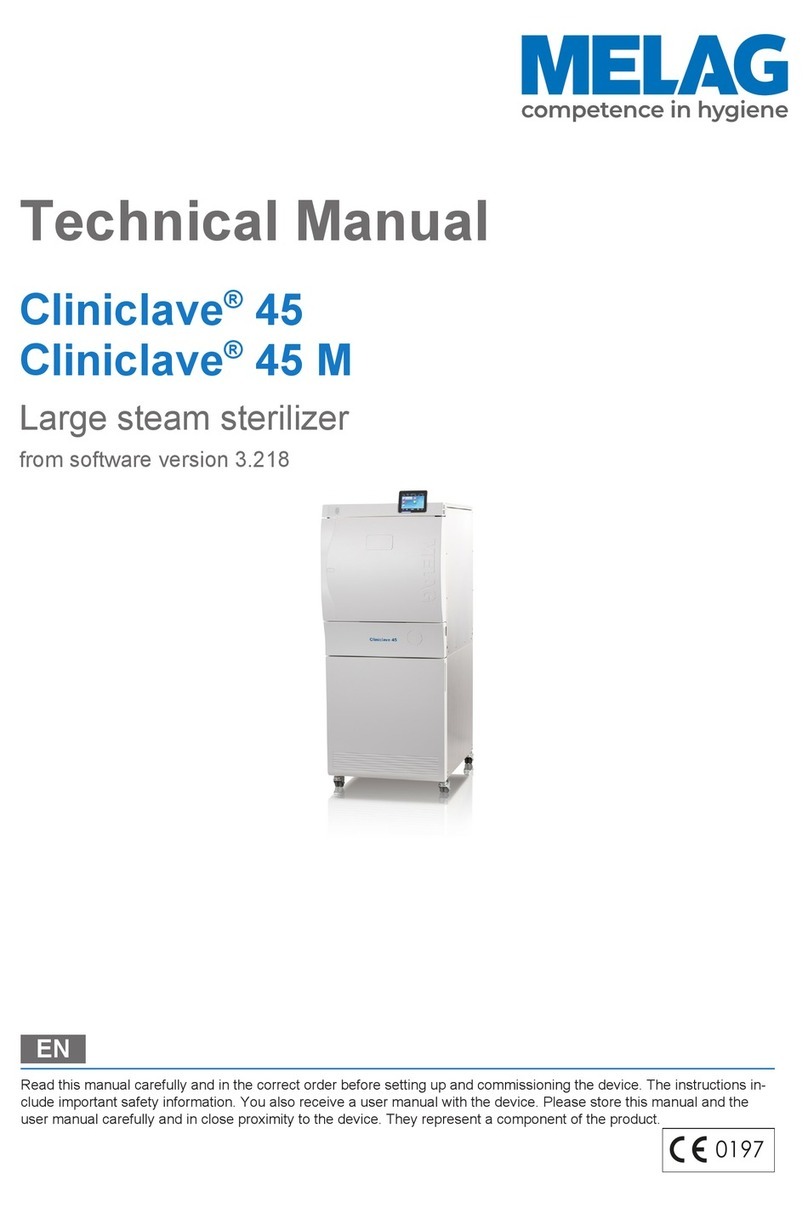page 4 Rev. 2 – 99/0233 BA_GB_215_225_255.doc
6. Hints about fault corrections
6.1. Timer does not automatically switch off power ________________________
If the timer is defective, the sterilizer can still be
operated in a half-automatic way with the help of the
permanent switch (6). Before exchange of the timer,
it is absolutely necessary to pull out the main plug.
Loosen the screw of the timer knob and remove the
knob. Unscrew the front scale plate and remove it
with care. Then remove the stick hulls of the cable
ends from the flat plugs of the timer and unscrew the
timer from the front scale plate. Connect and install
the new timer in the same way.
A new timer can only be ordered at specialist shops.
For quick completion, it is necessary to know the
type of sterilizer and its work number.
6.2. Temperature set up with the regulation knob does not tally with
indication of the thermometer _______________________________________
Hot-air sterilizers from MELAG are delivered with
temperature calibrated at 180°C by adjusting the
regulator axis so that the thermometer really
shows a value of 180°C. Then the thermostat
knob is sticked on the axis so that the white
indicator of the knob points to the 180°C- mark on
the scale. In this position, the thermostat knob is
fixed to its axis by fastening the clamp screw.
If the thermostat knob is unintentionally be turned
with force beyond the resistance due to improper
treatment, e.g. during cleaning or unpacking of the
gadget, or if the screw is loosened in the taper, the
knob can slip on the regulator axis. Respectively,
the real temperature inside the vessel (indicated
on the thermometer) is different from the one set
up on the regulator scale.
A quick correction can easily be achieved by
turning the thermostat knob either little clockwise
in order to obtain a higher temperature, or
counter-clockwise for lower temperature. Provi-
sional markings on the scale will help adjustment.
A correct calibration is carried out as follows:
Remove the grey cap from the thermostat knob.
After loosening the clamp screw below, the knob
can be removed from the axis. Close the door and
switch on the sterilizer. Now adjust the tem-
perature regulator by turning the axis (perhaps
with small pliers) so that the thermometer shows
the desired temperature (e.g. 180°C) after con-
clusion of pre-heat and equalization time. Put the
thermostat knob back on the axis so that the white
indicator points to a value on the scale which
agrees with the temperature shown on the
thermometer. Finally screw the knob's screw tight
without changing the position of the axis.
6.3. The appliance does not heat up _____________________________________
If your hot air steriliser does not work, check the
internal fuses. To change fuses, first disconnect
the appliance from the mains power supply. Press
down the tongue on the fuse container on the rear
side of the oppliance and pull the container out.
Inspect the fuses and exchange if necessary.
If the signal lamp (4) does not light up to show that
the power is on, check the cable, power socket,
and mains fuse.
If the signal lamp (4) lights up but not signal lamp
(2), check the setting of the control knob (see 1.
above).
7. Appendix
7.1. Spare parts ______________________________________________________













































